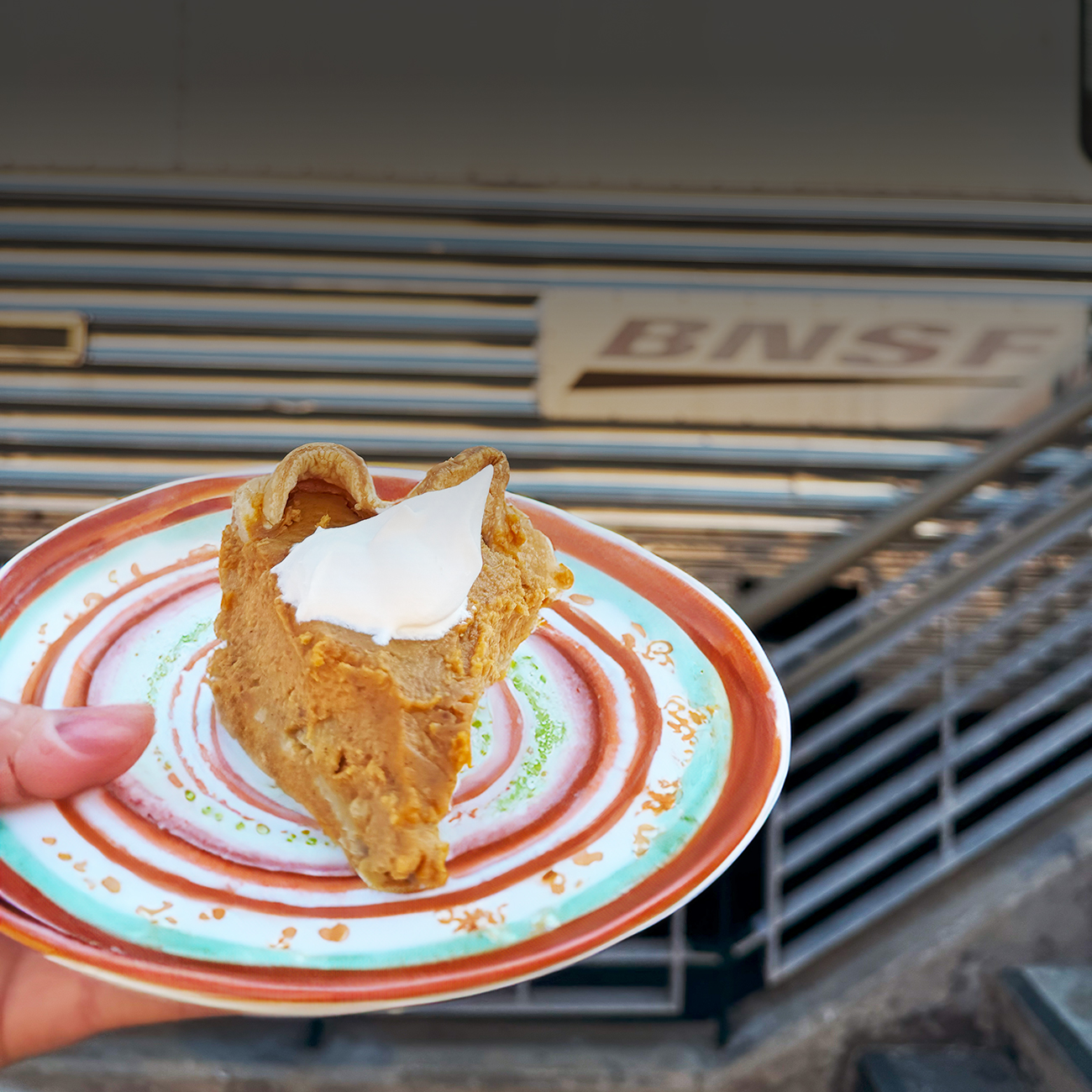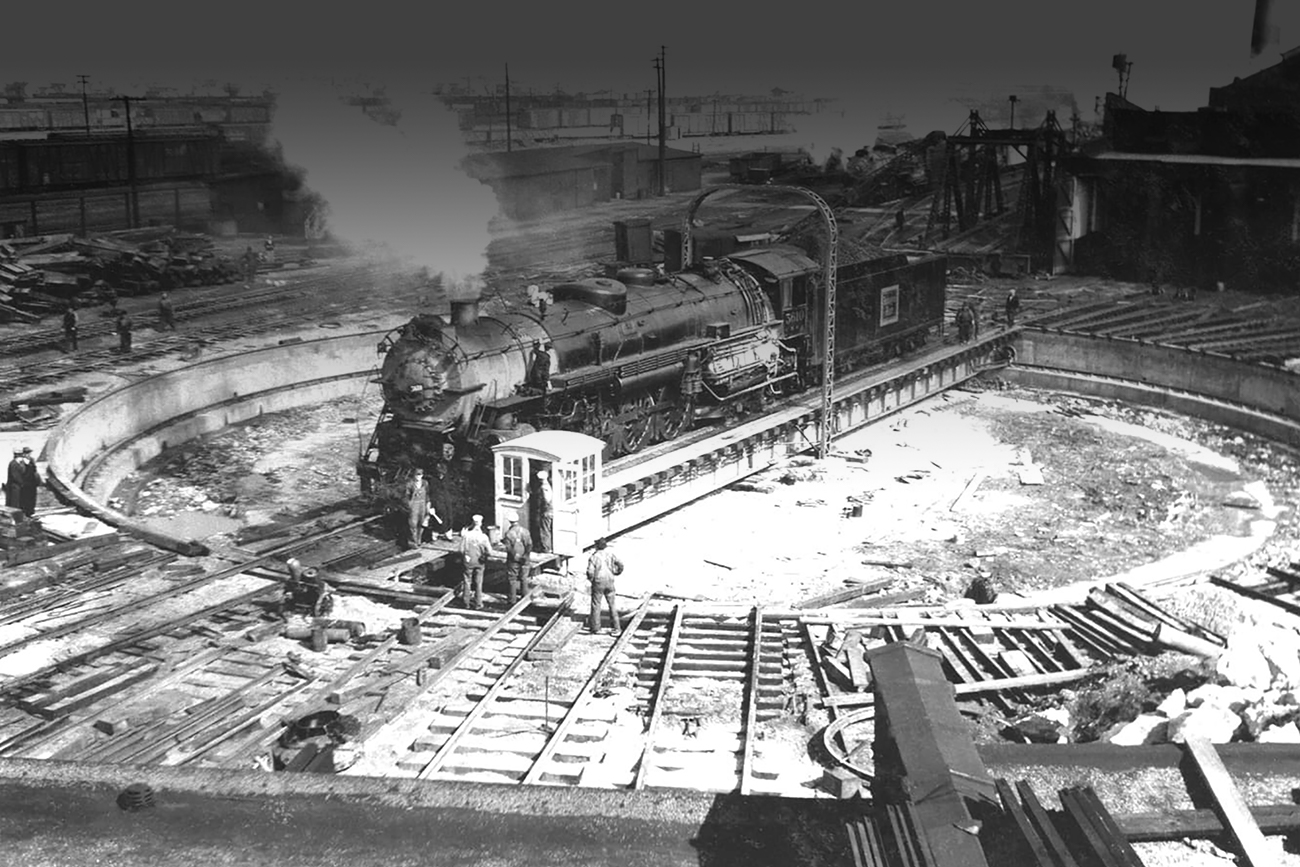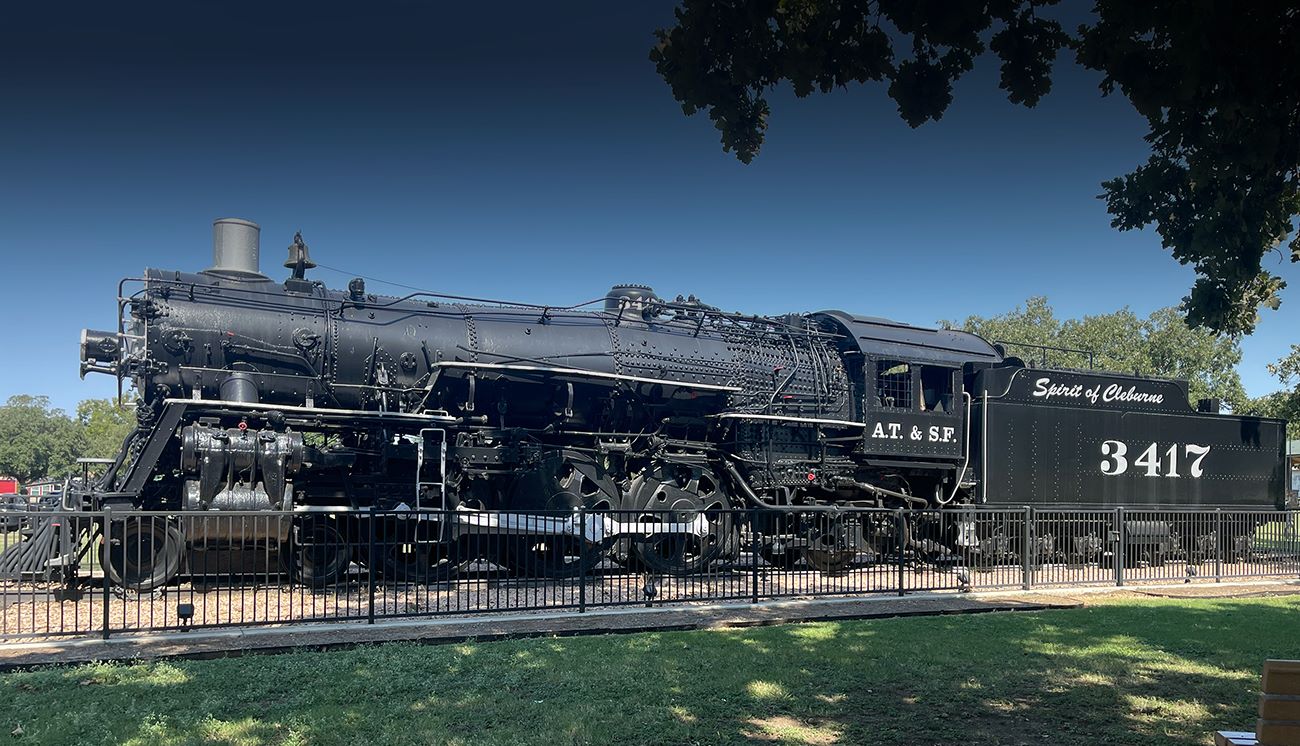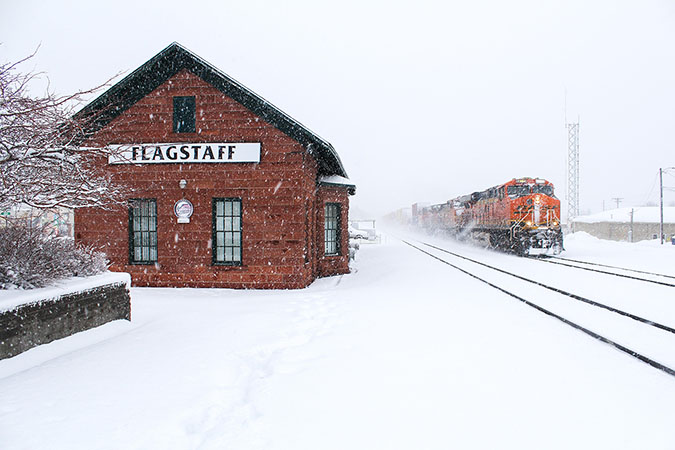
Peak railroading: History, freight and beauty meet at Flagstaff, Arizona
By SUSAN GREEN
Staff writer
Think Arizona, and hot, dry desert may come to mind. But head north to Flagstaff, “the destination for all seasons,” and at 6,900-feet elevation you’ll find comfortable summers, snowy winters and beautiful fall colors.
It’s also a favorite spot for train watchers, thanks to the backdrop of ponderosa pine forests surrounding the San Francisco Peaks. One of the most photographed spots is the former Atchison, Topeka & Santa Fe (ATSF or Santa Fe) depot, a Tudor-Revival style building that now serves as a visitors center and Amtrak station in the historic downtown district.
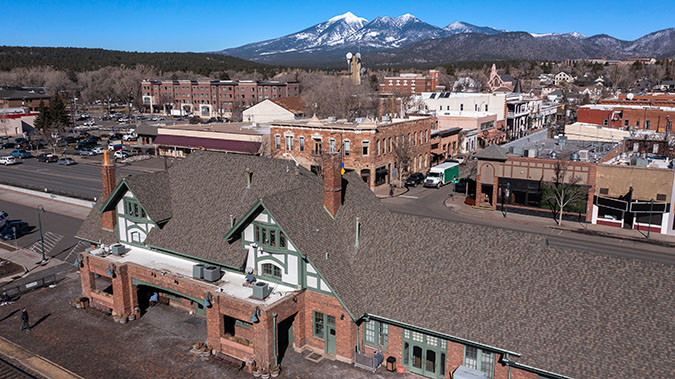
At one time, Flagstaff was a mainline stop for Santa Fe passenger trains, and it’s located on Route 66. The city has long been a tourist destination because of its proximity to the Grand Canyon.
Today, the Flagstaff station is part of BNSF’s Southwest Division on our important Southern Transcon route, which connects West Coast ports to the Midwest and sees about 100 trains, mainly intermodal, a day.
As Arizona’s largest rail service provider, BNSF is helping fuel one of the nation’s fastest-growing populations. But long before rail came to the state, its heritage dates to 1848, when it became an American territory.
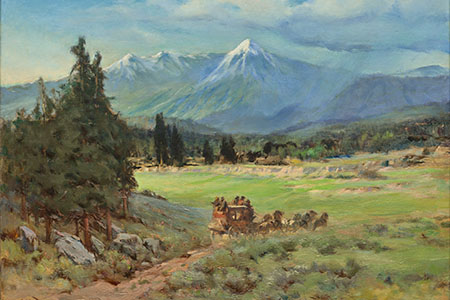
In 1866, Congress authorized construction of a transcontinental railroad west from Springfield, Missouri, to the Pacific Ocean in California via Santa Fe, New Mexico, and following the 35th parallel. The Atlantic & Pacific (A&P), a Santa Fe predecessor, built the line, putting the isolated northern Arizona territory in its path.
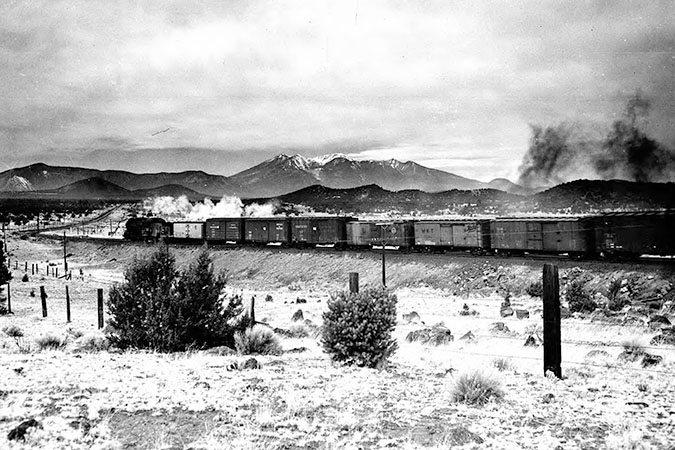
As tracks were laid west of Albuquerque, camps sprang up to sell food and supplies to the railroad crews. One such settlement would become Flagstaff, which in the early 1880s had a population of about 200. A&P arrived in Flagstaff in 1882, and the city was incorporated July 4, 1894.
First called Antelope Spring and later Old Town Spring, when the town wanted a post office it had to have an official name. A spring to the west was called “Flagpole Spring” because a flagpole had been put into the top of the highest pine tree near the spring, so townspeople agreed to call the town Flagstaff.
While intermodal trains are most common now, before their advent most of the rail traffic from Flagstaff was lumber or livestock. Today, BNSF’s Flagstaff-Winslow, Arizona, train serves the Nestlé Purina plant, Joy Cone for ice cream cone production, L&W Supply for wallboard and other local industries. About 150 employees make this city home with nearby Winslow base for train crews.
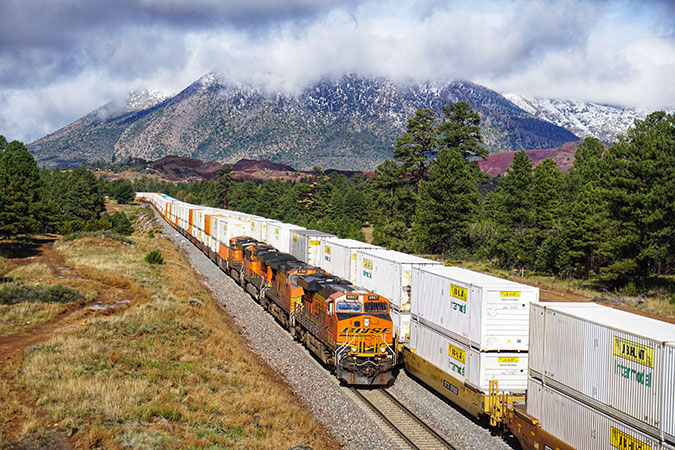
During their heyday, passenger trains regularly stopped at Flagstaff, which was the gateway to the Grand Canyon before the construction of the rail line to Williams, Arizona. More scenic wonders and ancient ruins are also nearby to attract visitors.
BNSF’s presence in Flagstaff today is primarily our intermodal trains traveling on our double-track mainline. Recently, our Public Infrastructure and Investments team worked closely with the city to secure funding for a safety infrastructure project. The Flagstaff Downtown Mile Safety and Connectivity Improvements Project, when completed, will provide enhanced safety measures like pedestrian gates, signaling, signage and multimodal pedestrian underpasses.
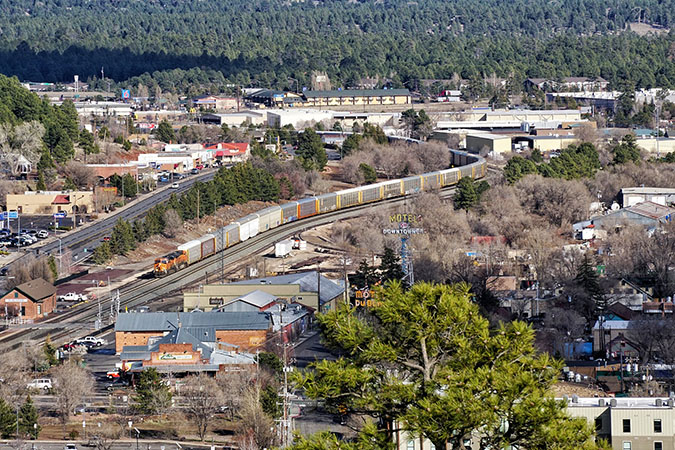
“Our ties to Flagstaff run deep, and we are proud of our shared history and present-day connection with this beautiful city, including helping to make it safer,” said Juan Acosta, BNSF’s general director of public affairs for Arizona. “Those ties and our people in northern Arizona promise a continued bright future for both the state and our railroad.”
